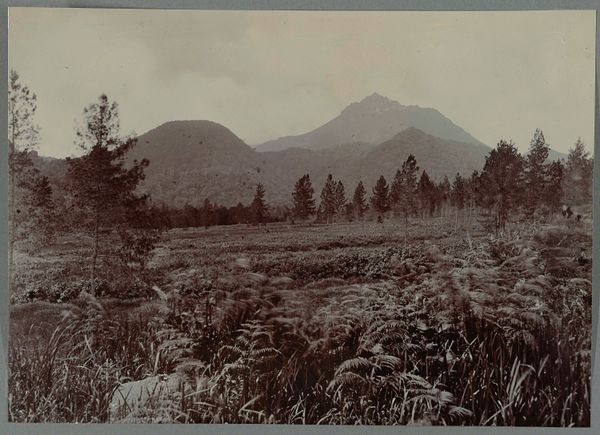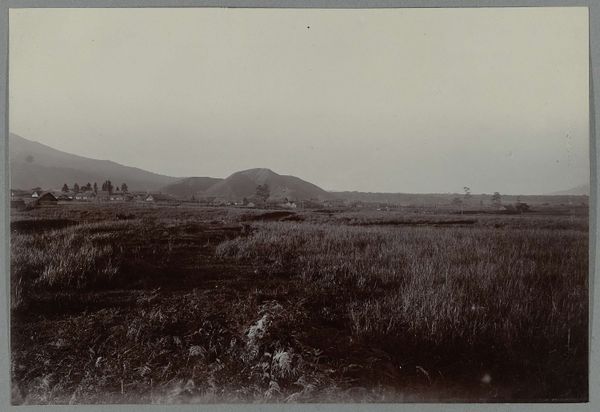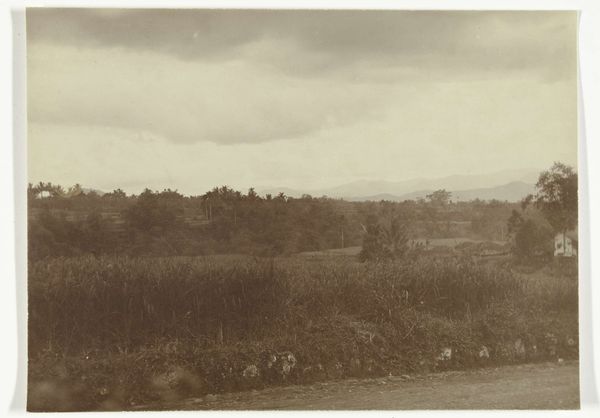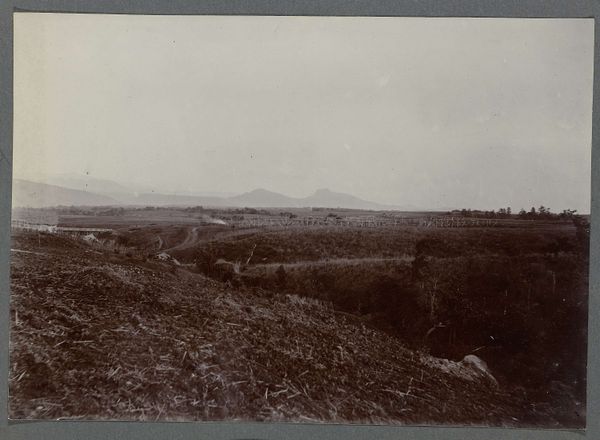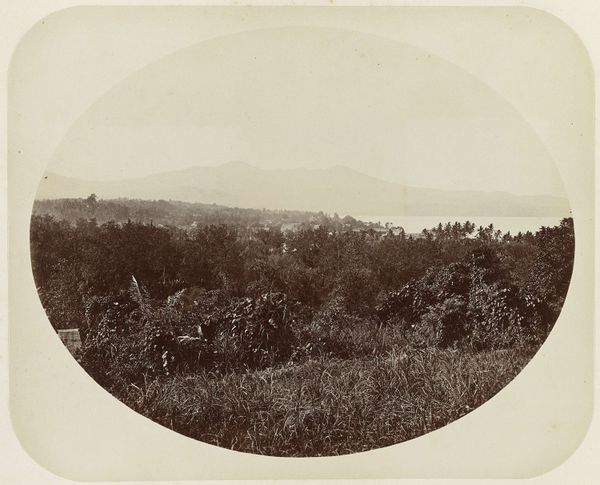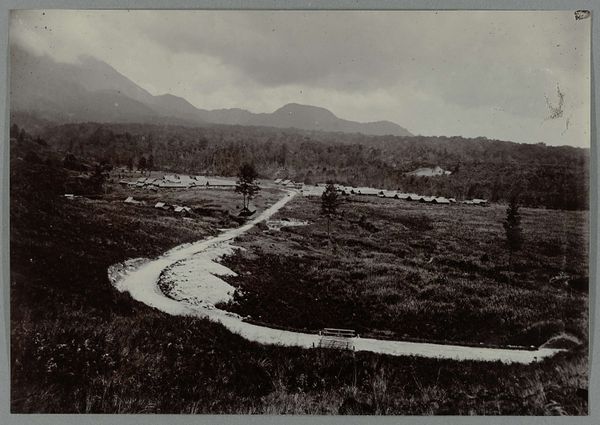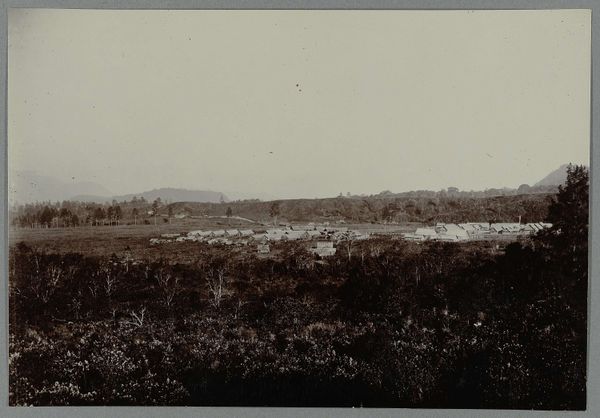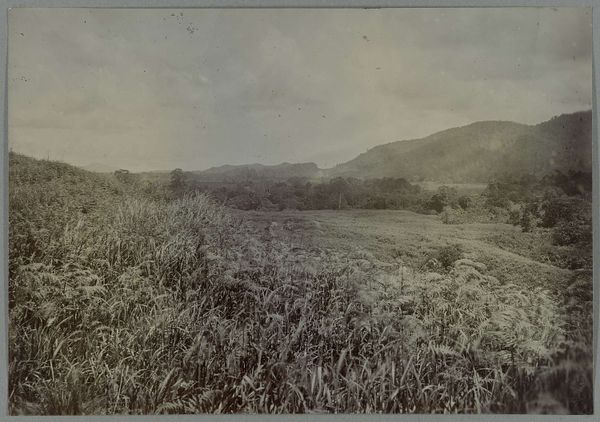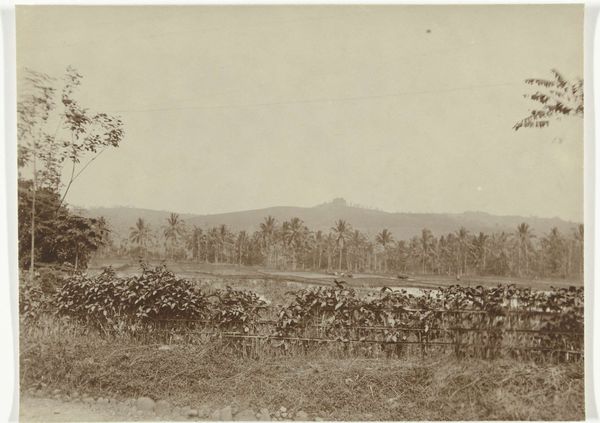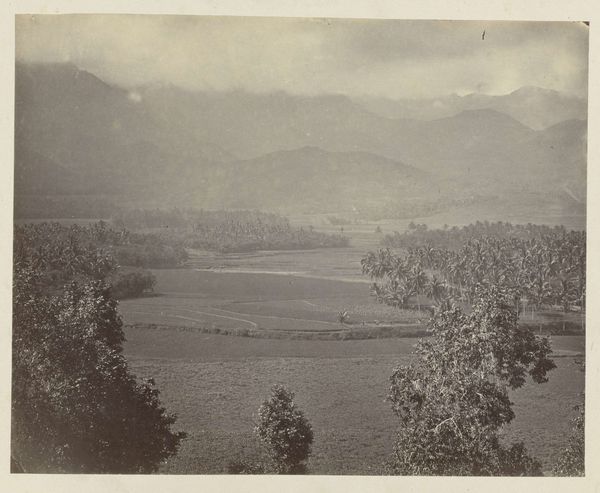
print, photography
# print
#
landscape
#
photography
#
realism
Dimensions: height 138 mm, width 200 mm
Copyright: Rijks Museum: Open Domain
Curator: We’re looking at a landscape photograph, probably captured between 1903 and 1913, titled "Landschap met bergen in de verte," or Landscape with mountains in the distance. Editor: It feels quiet, almost haunting. The tonal range is very narrow, lending a sense of vastness to a seemingly modest scene. Those mountains are so gentle, like sleeping giants on the horizon. Curator: It's a print, likely a gelatin silver print considering the period. It presents a somewhat stark realism, though it invites speculation about where it was taken and by whom, as we currently attribute it to an anonymous photographer. It is easy to get lost wondering the context of photographic prints such as this: Who would consume this? How were they meant to relate to the landscape it captures? Editor: Anonymous landscapes often stir me to connect on a deeper level; my experience fills that authorial void. I'm particularly drawn to the textured foreground – the grassy expanse hinting at untamed nature. This creates such a compelling push and pull with the distant mountain ridge. They echo each other, in a strange way. Curator: Absolutely. Focusing on the print as a manufactured object also helps unpack the history of image consumption. The labor that was invested in producing a photoprint that appears this straightforward—considering transport, resources, the chemical process itself, the accessibility of photography for an artist who felt comfortable photographing nature—becomes worthy of speculation. Editor: It’s interesting you mention labor. I agree! This type of composition, particularly when focusing on nature's monumentality, begs the viewer to acknowledge humanity’s relationship to it – even an anonymous individual's connection. The image reminds me of certain paintings by Caspar David Friedrich but distilled through the stark eye of photography. It encourages deep thinking, in silence. Curator: Indeed. To bring it back to materials: what paper stock was used? How were prints produced en masse at the turn of the century, and what class of consumers bought prints for the walls? Editor: Yes. The print raises all these questions. For me, the real treasure here is that mood of stillness; it gives me room to breathe in a way that is both personal, yet tied into the historical moment it inhabits.
Comments
No comments
Be the first to comment and join the conversation on the ultimate creative platform.
